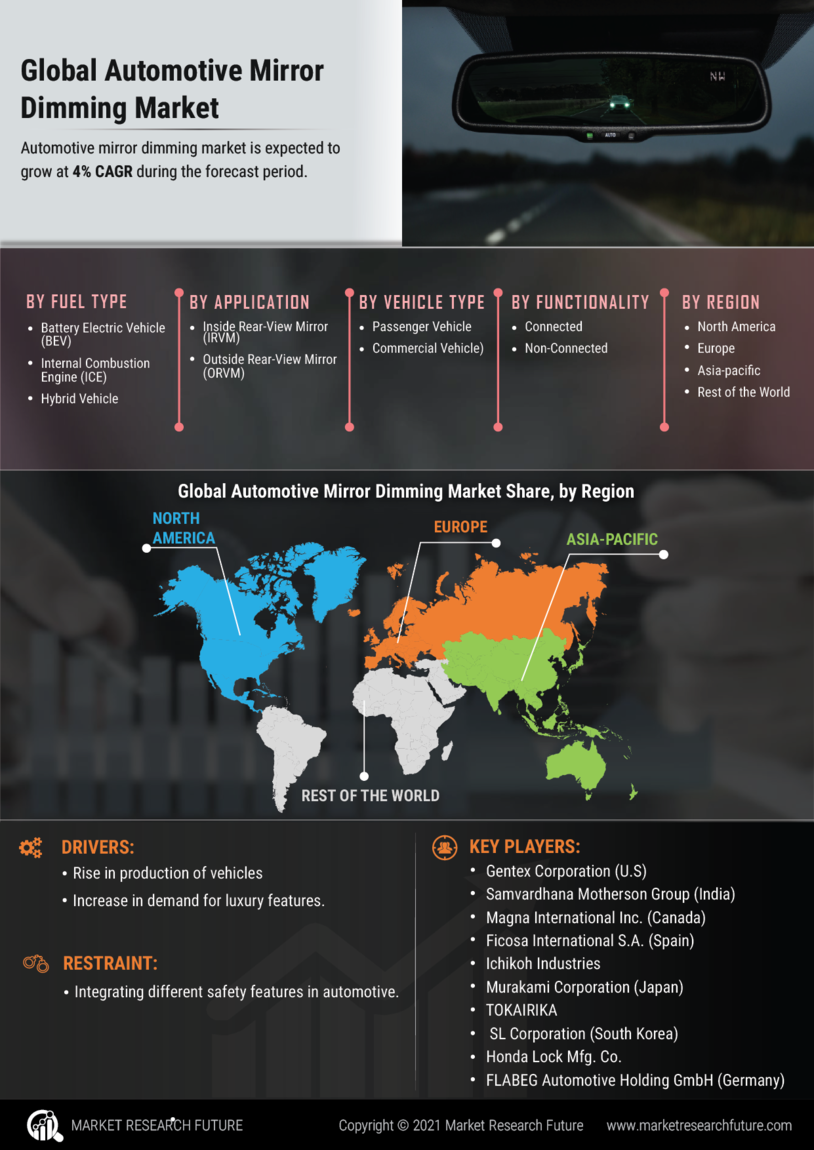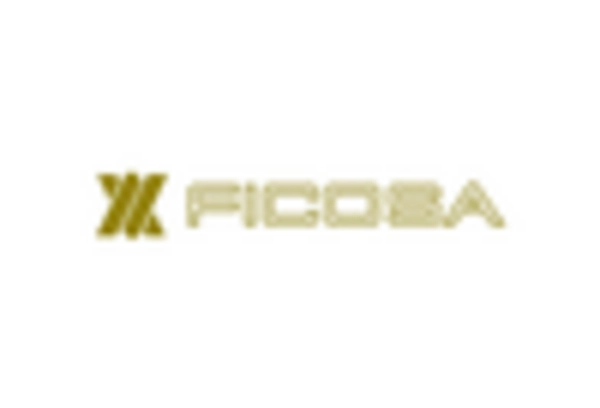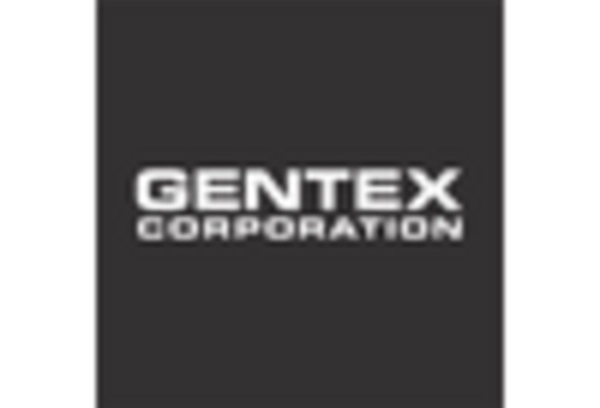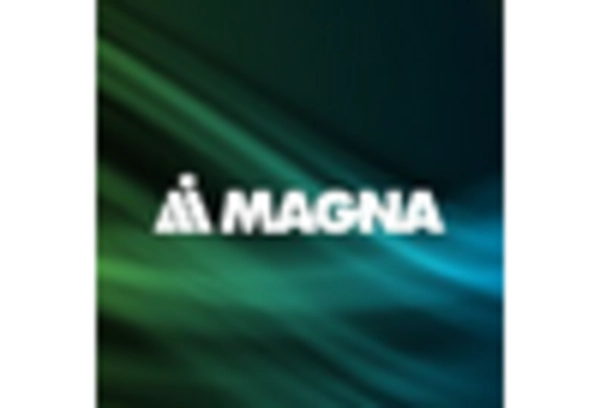Growing Electric Vehicle Adoption
The shift towards electric vehicles (EVs) is reshaping the Automotive Mirror Dimming Market. As more consumers opt for EVs, manufacturers are increasingly integrating advanced features, including mirror dimming technology, to enhance the driving experience. The demand for EVs is projected to grow at a compound annual growth rate of over 20% through 2025, which is likely to drive the adoption of innovative automotive technologies. Dimming mirrors are particularly appealing in EVs, as they contribute to energy efficiency by reducing the need for additional lighting. This trend suggests that the Automotive Mirror Dimming Market will benefit from the rising popularity of electric vehicles, potentially leading to a market valuation of around 1.8 billion USD by the end of 2025. The intersection of EV adoption and mirror technology presents a unique opportunity for growth.
Increased Safety Awareness Among Consumers
Consumer awareness regarding road safety is on the rise, significantly impacting the Automotive Mirror Dimming Market. As drivers become more conscious of the dangers posed by glare from headlights, the demand for dimming mirrors is likely to increase. Studies indicate that glare is a major contributor to nighttime accidents, prompting manufacturers to prioritize safety features in their designs. The incorporation of dimming technology in side and rearview mirrors is seen as a proactive measure to enhance visibility and reduce accidents. In 2025, it is estimated that the market for automotive safety features, including mirror dimming, will account for a substantial portion of the overall automotive accessories market, which is projected to exceed 10 billion USD. This trend underscores the importance of safety in consumer purchasing decisions, thereby driving growth in the Automotive Mirror Dimming Market.
Regulatory Support for Advanced Automotive Features
Regulatory bodies are increasingly advocating for the adoption of advanced automotive features, which is positively influencing the Automotive Mirror Dimming Market. Governments are implementing stringent safety regulations that encourage the use of technologies aimed at reducing accidents and improving driver comfort. For instance, regulations mandating the installation of advanced driver assistance systems (ADAS) are likely to boost the demand for automotive mirror dimming solutions. As of 2025, it is anticipated that compliance with these regulations will lead to a significant increase in the market size, potentially reaching 2 billion USD. This regulatory support not only enhances consumer confidence but also incentivizes manufacturers to innovate and invest in mirror dimming technologies, thereby fostering growth in the Automotive Mirror Dimming Market.
Consumer Preference for Enhanced Aesthetics and Comfort
The Automotive Mirror Dimming Market is also influenced by changing consumer preferences towards enhanced aesthetics and comfort in vehicles. Modern consumers are increasingly seeking vehicles that not only perform well but also offer a visually appealing and comfortable driving experience. Dimming mirrors contribute to this by providing a sleek, modern look while also improving visibility and reducing glare. As of 2025, it is estimated that the demand for aesthetically pleasing automotive features will drive a significant portion of the market, with projections indicating a potential market size of 1.2 billion USD for automotive accessories that enhance comfort and style. This trend highlights the importance of integrating functionality with design, suggesting that manufacturers who prioritize these aspects in their mirror dimming solutions are likely to gain a competitive edge in the Automotive Mirror Dimming Market.
Technological Advancements in Automotive Mirror Dimming
The Automotive Mirror Dimming Market is experiencing a surge in technological advancements, particularly with the integration of electrochromic materials. These materials allow mirrors to automatically adjust their tint in response to light intensity, enhancing driver visibility and comfort. As of 2025, the market for electrochromic mirrors is projected to reach approximately 1.5 billion USD, reflecting a compound annual growth rate of around 8%. This growth is driven by the increasing demand for advanced driver assistance systems (ADAS) and smart vehicle technologies. Furthermore, innovations in sensor technology and connectivity are likely to enhance the functionality of automotive mirrors, making them more appealing to consumers. The ongoing research and development in this sector suggest that the Automotive Mirror Dimming Market will continue to evolve, potentially leading to more sophisticated and user-friendly products.


















Leave a Comment